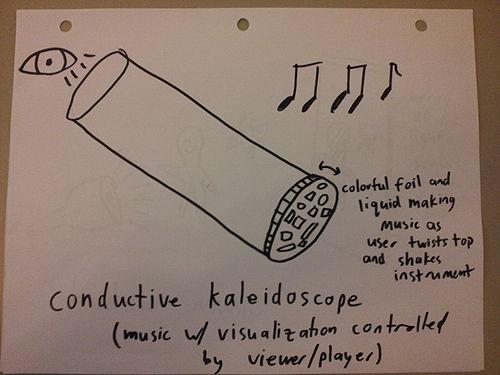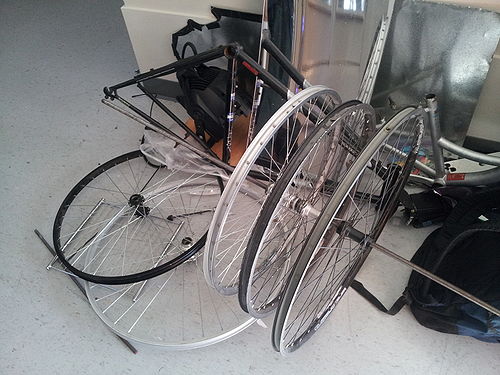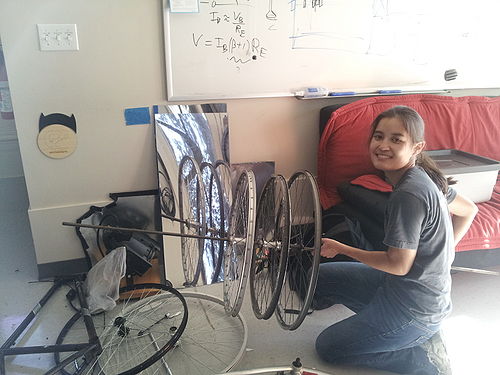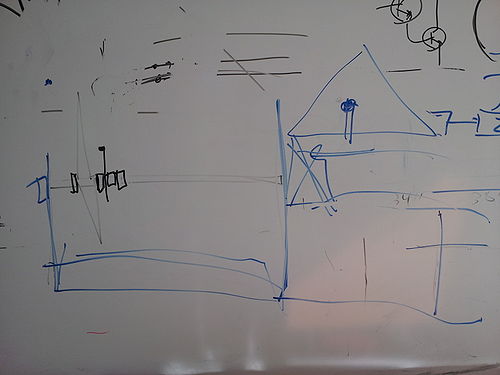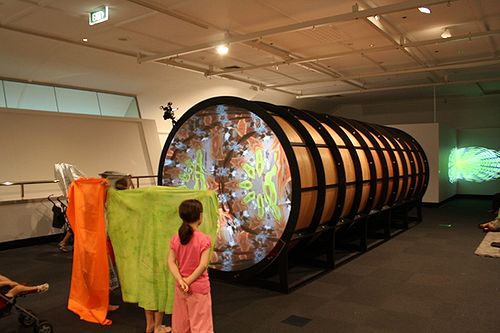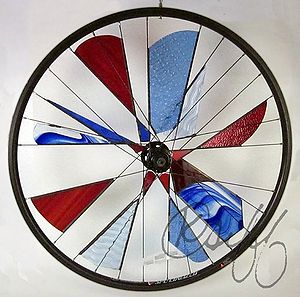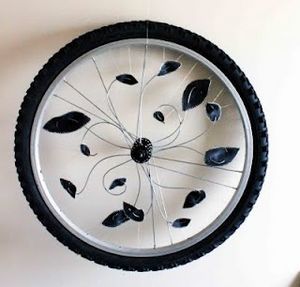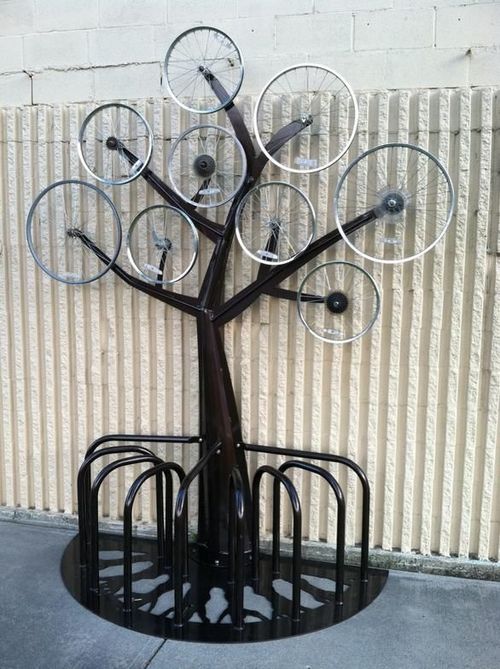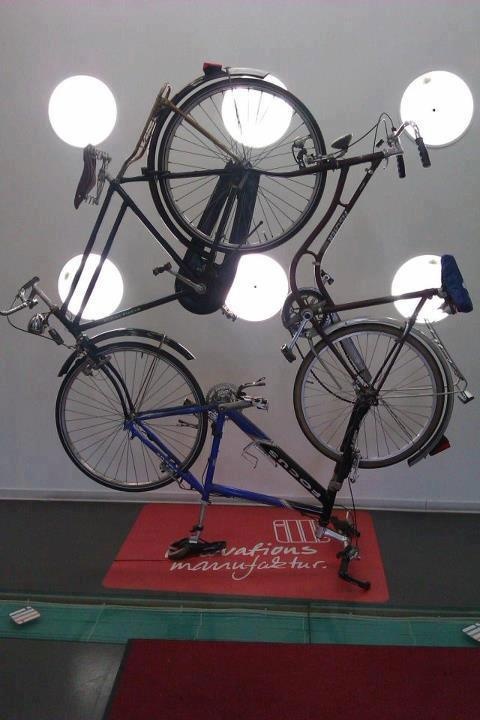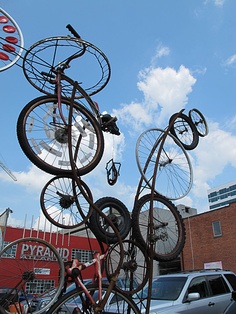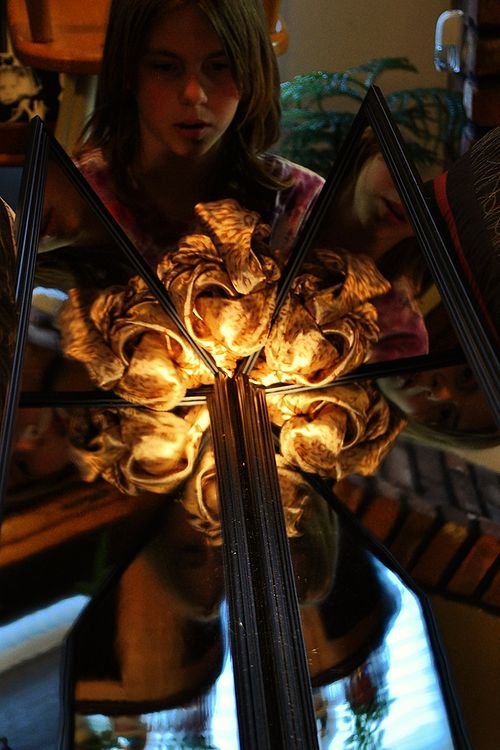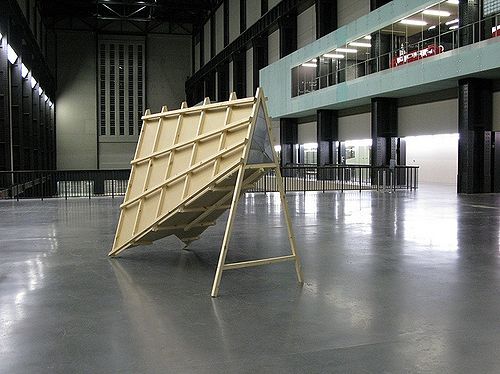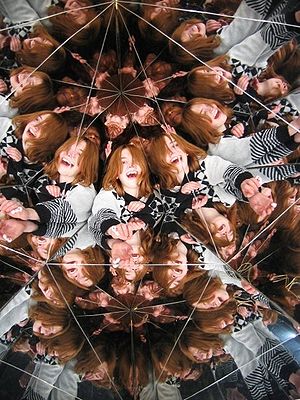Difference between revisions of "Bicycaleidoscope"
(Expanded out need/want/have after group discussion) |
(Papers) |
||
| Line 42: | Line 42: | ||
=== Similar Work === | === Similar Work === | ||
| + | |||
| + | '''Papers''' | ||
| + | |||
| + | [http://ieeexplore.ieee.org/stamp/stamp.jsp?tp=&arnumber=1278690 Discussion of the Iamascope and other musical interactions] | ||
| + | |||
| + | [http://ieeexplore.ieee.org/xpls/abs_all.jsp?arnumber=671015&tag=1 Interactive electronic kaleidoscope: The Iamascope] | ||
| + | |||
| + | [http://ieeexplore.ieee.org/xpls/abs_all.jsp?arnumber=713302 Extension of the Iamascope with jazz and drums] (great pictures) | ||
| + | |||
'''A giant digital kaleidoscope which is activated by the participation of the viewer''' | '''A giant digital kaleidoscope which is activated by the participation of the viewer''' | ||
Revision as of 23:13, 3 November 2013
Contents
Bicycaleidoscope: A Giant Musical Kaleidoscope
Music 250a, Fall 2013
Brie Bunge and Sophia Westwood
Drawings
Early sketch of a musical kaleidoscope:
This sketch came from the brainstorming assignment for class -- the initial idea is a small, handheld kaleidoscope where the music syncs up with the visualization.
Design sketch of a larger, more public musical kaleidoscope experience:
Design discussions with Sasha led to the idea of using bike wheels and a spotlight to project a kaleidoscope onto a wall, with Hall sensors to track the velocity and acceleration. This sketch shows a series of bike wheels mounted on a rod. The idea is that the musician would spin the bike wheels by hand to control both the musical output and the visual results.
Starting to build the instrument:
We procured bike wheels from the bike store and a metal rod from the garage and started to set up the instrument. We experimented with using the bike frames (in the background) as part of the mounting system. The mirrors (also in the background) will form the tunnel of the kaleidoscope. Our experimentation with the wheels and the mirrors proved that the mirror tunnel is key to the visual effect of the kaleidoscope -- otherwise, only having spinning gels and beads feels a little lame.
Sketch for mounting the sensors
Now that the bike wheels are mounted, we started to think about how to incorporate sensors into the instrument. This idea is to mount the Hall effect sensors on the rod itself (stationary), to track the bike wheel movement. Then, the mirror will cover only the bottom half of the bike wheel, so that the sensor does not interfere with the visual effect.
Similar Work
Papers
Discussion of the Iamascope and other musical interactions
Interactive electronic kaleidoscope: The Iamascope
Extension of the Iamascope with jazz and drums (great pictures)
A giant digital kaleidoscope which is activated by the participation of the viewer
Takeaway: Viewers enjoy interacting with the kaleidoscope, so we should make sure that viewers can be expressive and creative in their interactions. Also, giant kaleidoscopes are awesome!
Bike Wheel Art
Takeaway: This is great inspiration for how we might want to incorporate colors into the bike wheel spokes.
Bike rack tree
Takeaway: Love this beautiful bike rack tree. We could go with a more junkyard aesthetic, like some of the other images here. But, going with this more minimalist/clean aesthetic could perhaps have more of a wow factor, like in this case.
Three bikes mounted together as a tree
Takeaway: The bike frame/part aesthetic is appealing.
Recycled bicycle sculpture
Takeaway: Another incorporation/celebration of the junkyard aesthetic
DIY homemade giant kaleidoscope
Takeaway: Light and colors make the kaleidoscope more visually engaging
Giant kaleidoscope made for an event a Tate Modern in 2008
Takeaway: People seem to enjoy playing with the altered visual state that kaleidoscopes create
Sunrise Bike Wheel Kaleidoscope
Bicycle wheel with an axle extending out of the side that can be used as a handle while the bike wheel spins. This video shows footage from a camera mounted at the center of the wheel, mirrored four times.
Need/Want/Have
NEED: Things you need to have done for a minimal viable product
- Mount bicycle wheels so that they can stand and we can spin them.
- Modify the inside of the wheels by attaching gels, colorful beads, and perhaps altering the spokes to create interesting visual effects when spun.
- Place a triangle of mirrors such that looking through the triangle reflects the bike wheels in cool ways.
- Attach sensors (magnets and hall effect sensors) to detect bike wheel movement.
- Hook sensors up to an Arduino.
- Write code to interface with the Arduino that reads out velocity and acceleration for each bike wheel.
- Send the velocity and acceleration data to a music generation system that uses these parameters to make sound. The music should depend on the motion of the bike wheels to make the interaction, visuals, and acoustics feel connected.
- At the most basic level, the music generation system could just map the wheels to different voices (soprano, alto, tenor, and bass, assuming four wheels) and, similar to tone matrices, use a pentatonic scale to make the voices sound good together. Another simple (less smooth-sounding) option would be for the wheel velocity to control the pitch/tempo, and for different bike wheels to map to different timbres.
WANT: Things that you want to have done by the final deadline
- A camera + projector set up so that the view inside the mirrors can be seen by a larger audience
- A consistent look, sound, and feel to the instrument (grunge, elegant, artsy, etc)
- The music generation system will learn from a corpus of scores to build up a database of note sequences. Now, suppose that we spin the first wheel. We will use the velocity of the wheel to control the tempo of the music that is probabilistically generated using the database. Now, let us spin the other wheels. We use each of these to control the average note length of harmony that is probabilistically generated given the lead track.
NICE TO HAVE: Things that would be nice to have if you had unlimited time.
- A variety of sensors to allow a wider range of interaction with the kaleidoscope (perhaps detecting taps on the bike wheels, shaking of the rod, etc)
- The interaction between the wheels affects the resulting sound (ie, one wheel spinning fast while the other spins slowly is not just the combination of the individual wheels).
Elevator Pitch
We are building a giant musical kaleidoscope with bike wheels. The musician spins bike wheels with colorful gels to create awesome visual effects while sensors translate the wheel movement into music. A large kaleidoscope triangle of mirrors reflect the visuals while Hall effect sensors pick up the wheel acceleration and velocity and translate the activity into music.
List of Materials
Necessary
- 1 to 3 bike wheels
- A rod (metal) to mount the bike wheels
- Hall effect sensors (probably 1-3) to detect movement of the bike wheels
- Small magnets (+ a way to mount them to the wheels) for the Hall effect sensors
- Arduino + computer (or Raspberry Pi), speakers
- Wires, connectors for joining sensors with Arduino + computer
- 3 long mirrors for creating the triangle of mirrors
- Three 60 degree rigid angles (metal, wood, etc) plus fasteners to secure the mirrors into the triangle
- Washers and possibly nuts for holding the bike wheels in place
- Colorful gels for placing on the bike wheels (likely colorful beads etc as well)
- Frame for mounting bike wheels and mirror in the right relation to each other
Likely
- A camera and projector to take the view from the mirror tunnel and make it more broadly accessible (+projection screen)
- Sensors on other parts of the mount for other audio effects
- Spotlight to have enough light for the kaleidoscope effect
- Clip-on weights for the bike wheels for more interesting rotation
Steps for Minimal Viable Product
- Mount 1-3 bike wheels onto a rod with color gels and beads to create an interesting visual effect.
- Place a triangle of mirrors such that looking through the triangle reflects the bike wheels in cool ways.
- Mount sensors onto the instrument to sense the movement of the bike wheels (at least one bike wheel for MVP).
- Connect the sensors with an Arduino + Raspberry Pi (or computer) and translate the sensor input into basic musical output (perhaps simple pitch and modulation for MVP).
